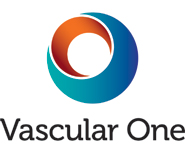What is CT angiography?
Angiography is a minimally invasive medical test that helps physicians diagnose and treat medical conditions. Angiography uses one of three imaging technologies and, in some cases, a contrast material to produce pictures of major blood vessels throughout the body.
Angiography is performed using:
- x-rays with catheters
- computed tomography (CT)
- magnetic resonance imaging (MRI)
In CT angiography (CTA), computed tomography using a contrast material produces the detailed pictures. CT imaging uses special x-ray equipment to produce multiple images and a computer to join them together in cross-sectional views.
What are some common uses of the procedure?
CT angiography is used to examine blood vessels in key areas of the body, including the:
- brain
- kidneys
- pelvis
- legs
- lungs
- heart
- neck
Physicians use the procedure to:
- identify disease and aneurysms in the aorta or in other major blood vessels
- detect atherosclerosis disease in the carotid artery of the neck, which may limit blood flow to the brain and cause a stroke
- identify a small aneurysm or arteriovenous malformation inside the brain
- detect atherosclerotic disease that has narrowed the arteries to the legs and help prepare for surgery
- indicate disease in the renal artery or visualize blood flow to help prepare for a kidney transplant
- guide surgeons making repairs to diseased blood vessels, such as implanting or evaluating a stent
- detect injury to one of more arteries in trauma patients
- evaluate the details of arteries feeding a tumor prior to surgery
- identify dissection in the aorta or its major branches
- show the extent and severity of atherosclerosis in the coronary arteries
- plan for a surgical operation, such as coronary bypass
- screen individuals for arterial disease, especially patients with a family history of arterial disease or disorders
- evaluate prospective kidney donors
- examine pulmonary arteries in the lungs to rule out pulmonary embolism
- detect thrombosis (clots) in veins
